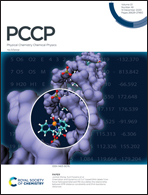Synthesis and characterization of a strong ferromagnetic and high hardness intermetallic compound Fe2B†
Abstract
Magnetic materials attract great attention due to their fundamental importance and practical application. However, the relatively inferior mechanical properties of traditional magnetic materials limit their application in a harsh environment. In this work, we report an outstanding magnetic material that exhibits both fantastic mechanical and excellent magnetic properties, CuAl2-type Fe2B, synthesized by the high pressure and high temperature method. The magnetic saturation of Fe2B is 156.9 emu g−1 at room temperature and its Vickers hardness is 12.4 GPa which outclasses those of traditional magnetic materials. It exhibits good conductivity with a resistivity of 5.6 × 10−7 Ω m. Fe2B is a promising strong ferromagnetic material with high hardness, which makes it a good candidate for multifunction applications in a harsh environment. The high hardness of Fe2B originates from the Fe–B bond framework, and the strong ferromagnetism is mainly attributed to the large number of unpaired Fe 3d electrons. The competition of Fe 3d electrons to fall into Fe–B bonds or Fe–Fe bonds is the main factor for its magnetism and hardness. This work bridges the chasm between strong ferromagnetism and high hardness communities.



 Please wait while we load your content...
Please wait while we load your content...